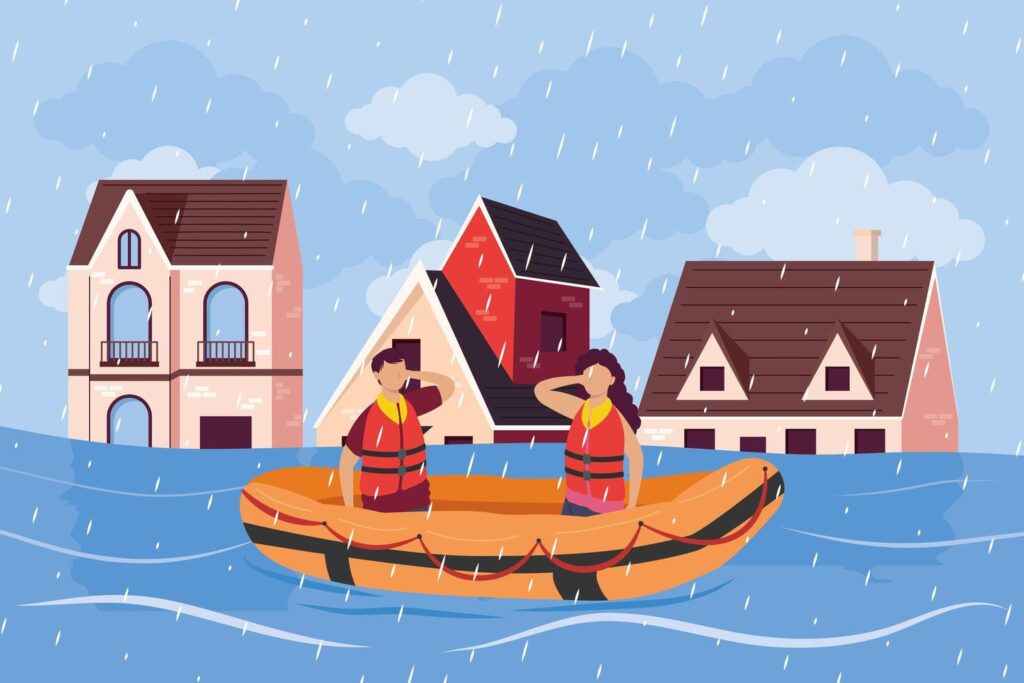The insurance industry is facing an unprecedented challenge as climate change accelerates. By 2025, 1 in 10 homes in high-risk areas will be uninsurable, premiums in wildfire and flood zones are projected to increase by 300%, and insurers are rewriting policies to account for “once-in-a-century” events that now happen annually.
This in-depth guide explores how wildfires, floods, and extreme weather are transforming insurance coverage, pricing, and risk assessment in 2025—and what homeowners, businesses, and policymakers must do to adapt.
1. The State of Climate Risk in 2025
A. Wildfires: The New Normal
- $25 billion in annual wildfire damages (up from $5B in 2020)
- “Fire season” now year-round in California, Australia, and Southern Europe
- Insurers pulling out of high-risk states:
- State Farm stopped new policies in California
- Allstate exited Colorado wildfire zones
B. Flooding: Beyond FEMA Maps
- 40% of flood claims now come from “low-risk” areas
- Hurricane intensification: Storms like Ida (2024) cost $75B+
- NFIP (National Flood Insurance Program) debt hits $36B
C. The “Climate Penalty” on Premiums
| Risk Zone | 2020 Avg. Premium | 2025 Projection |
|---|---|---|
| Wildfire (CA) | $1,200/year | $4,500/year |
| Coastal Flood (FL) | $1,800/year | $6,000/year |
| Tornado Alley (OK) | $900/year | $2,700/year |
2. How Insurers Are Adapting (And Leaving Customers Behind)
A. AI-Powered Risk Modeling
- Satellite imagery tracks deforestation and urban sprawl
- Real-time climate data adjusts premiums dynamically
- Example: Swiss Re’s “Climate Impact Score” grades properties hourly
B. Policy Exclusions & Loopholes
- “Named storm” deductibles (up to 10% of home value)
- Mold & water damage caps after floods
- “Gradual damage” exclusions for slow-moving disasters
C. The Rise of State-Backed “Insurers of Last Resort”
- California FAIR Plan: Covers high-risk homes at 2-3x market rates
- Florida Citizens Insurance: 1.3M policies (double 2020 numbers)
- UK Flood Re: Subsidized premiums for vulnerable areas
3. What Homeowners Must Do in 2025
A. Risk Mitigation = Lower Premiums
- Fire-resistant roofing ($$$ savings)
- Flood barriers & drainage upgrades
- “Fortified Home” certification discounts
B. Alternative Coverage Options
- Parametric insurance (pays out based on weather triggers)
- Peer-to-peer insurance pools
- Catastrophe bonds for businesses
C. When to Relocate
- Redlining 2.0: Banks denying mortgages in high-risk ZIP codes
- Climate migration hotspots: Michigan, Vermont, Pacific Northwest
4. The Future of Climate Insurance (2025-2030)
- “Climate scores” affecting home values and loans
- AI-driven “dynamic pricing” adjusting premiums daily
- Carbon offset requirements for policy renewals
Prediction: By 2030, private insurers will cover only 60% of U.S. homes, leaving the rest to state programs.
Conclusion: Surviving the Climate Insurance Meltdown
Immediate Steps:
✅ Run a “climate risk audit” on your property
✅ Lock in long-term policies before 2025 rate hikes
✅ Lobby for better infrastructure spending


